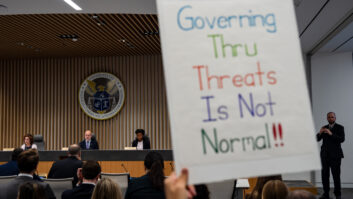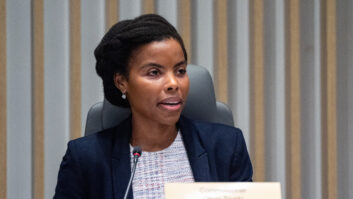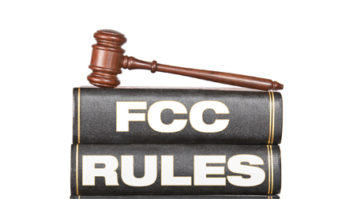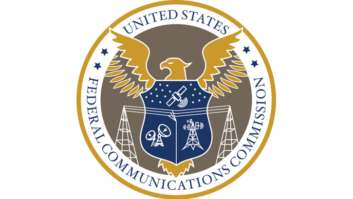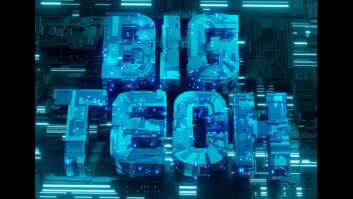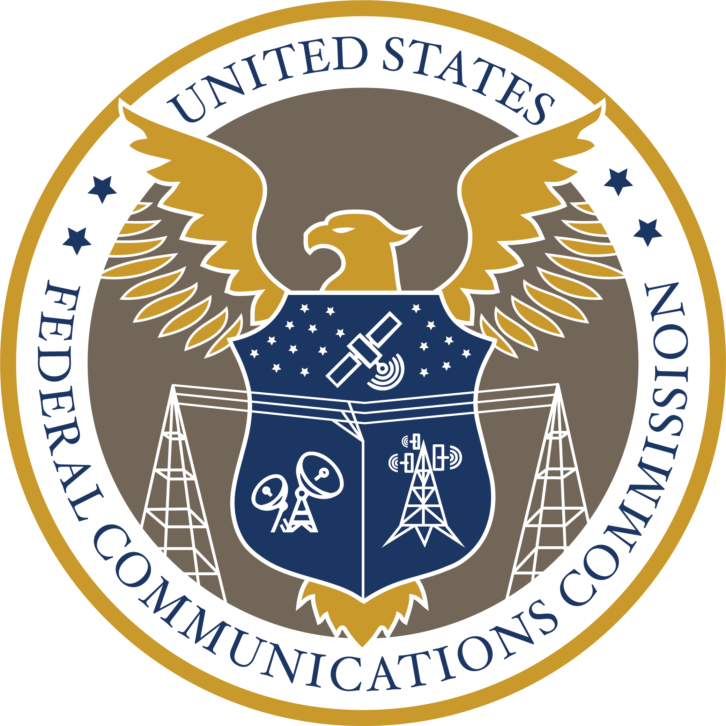
The complexities of the transition from the FCC Media Bureau’s online Consolidated Data Base System (CDBS) to the Licensing and Management System (LMS) have been well chronicled. But some of the major stakeholders who regularly use the new system told Radio World they generally find it to be more flexible than its predecessor despite some challenges.
LMS is the Media Bureau’s latest internet-based system to permit electronic filing of broadcast radio and television application forms with the Federal Communications Commission.
“I think broadcasters need to keep in mind that the transition to LMS is a work in progress and that some patience is needed as the FCC works out the kinks,” one veteran consulting engineer said.
“Significant” advance
The FCC launched its e-filing LMS forms system for TV licensees in late 2014. The LMS transition for radio broadcasters began in May 2019 with the transition of station renewal applications to the new platform. The FCC subsequently transitioned applications for new and modified FM, FM translator and booster, and LPFM stations to LMS.
In November, the FCC announced that applications for assignment and transfer of control of broadcast station licenses and construction permits would begin transitioning from the CDBS and become available in the LMS, though existing assignment/transfer applications will not be moved.
This latest phase “significantly advanced the LMS transition,” said a commission spokesperson. The renewal, assignment of license and transfer of control applications are the most heavily used of Media Bureau forms.
The spokesperson said the main items remaining to transition are AM applications and a number of informal filings and less commonly used forms.
“While no conversion is without its issues, we are pleased there have not been major disruptions during the transition,” the spokesperson said.
The EEO Program Report, Schedule 396, went to LMS as part of the transition of the renewal application, according to the FCC.
The Online Public Inspection File (OPIF) will remain a separate database. Information filed in LMS, where necessary, will link to OPIF the same way CDBS feeds information to OPIF.
Aiming to simplify
It’s important to note that information does not flow from LMS back to the CDBS database. For pending applications filed in CDBS and for legacy information, broadcasters should continue to check both LMS and CDBS to ensure they have complete information.
Also, “Although the FCC conducts extensive testing before we make public releases, there inevitably will be some bugs that we do not catch,” the spokesperson said.
The FCC describes the old CDBS database as “extremely complex,” containing decade’s worth of information that is highly customized. The gradual transition to LMS has been a deliberate process to avoid mistakes when possible, the spokesperson said.
“It also is important to note that the transition is not limited to the public-facing applications and database search features. We also are transitioning the engineering tools we use to analyze applications and the administrative tools we use to process applications. In many cases, transitioning those tools greatly complicates the process and leads to longer transition timelines.”
More elegant
Joe Davis, consulting broadcast engineer and president of Chesapeake RF Consultants, says LMS does present a new way of doing things but that it feels like a more elegant form of electronic filing.
“We’ve have had to learn what kinds of files could be uploaded, sizes allowed and the easiest way of searching for filings,” Davis said, “but it takes time to adapt to the differences.”
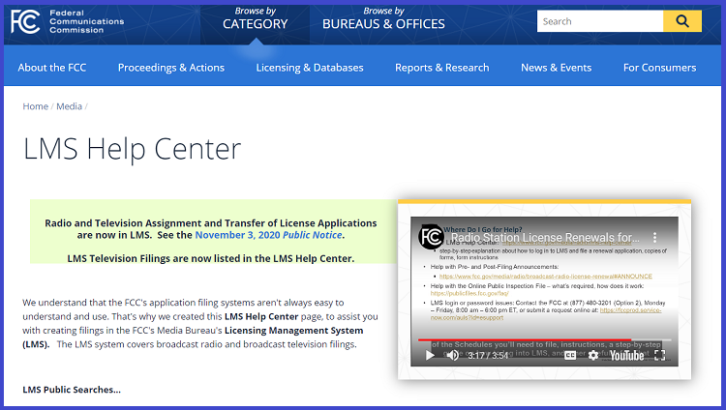
Davis said one noticeable difference is the abandonment of the FCC’s decades-long use of file numbers and prefixes that reflect the nature of an application (for example, BP- for AM construction permit, BPH- for FM construction permit, BL- for AM license and so on), and the date filed of new applications.
“Now in LMS, that filing is just a sequential number given in order of all applications received. It just makes it much more difficult to search for applications because you just don’t know the date of an application without reading the file.”
There really isn’t much for station engineers to enter in LMS, Davis said.
“The typical scenario for a station-level engineer might be to query information from LMS. The public access part of LMS allows for people to cull readily available information on any station by entering a call sign,” he said. “CDBS had those same query features but they are a bit different now.”
The occasional PDF file gets corrupted during the uploading process in LMS, Davis said.
Bob Weller, vice president of spectrum policy for the National Association of Broadcasters, said the CDBS had a lot going for it but did have limitations such as fixed fields that couldn’t be easily changed. “Then when the FCC did change something it would break everyone’s software,” Weller said with a chuckle.
The initial migration was incremental but still “pretty disruptive,” he said, “because the underlying database structures that sophisticated law offices and consulting broadcast engineers use are very different from the FCC’s graphical user interface. So there were some hiccups with the LMS server, but those seem to have been worked out.”
Weller says many consulting engineers still complain about the lack of AM data available in CDBS and now LMS.
“Figures and graphical things unique to medium-wave broadcasting were never added to CDBS. And AM license applications Form 302 are still a paper filing exercise,” Weller said. “And in order to look at someone else’s AM application filing you need to send someone downtown — Washington — to retrieve all of the paper records from the Public Inspection Room. It’s unduly expensive because of it.”
The Media Bureau does plan to transition all AM filings to electronic submissions in LMS as part of the change to the LMS system. “Due to the complexities of AM engineering, we expect that to be a significant development effort,” the FCC spokesperson told Radio World.
Weller, who previously worked at the FCC, said the commission introduced an online database in 1979, called the Broadcast Application Processing System (BAPS), which processed applications and generated authorizations and Public Notices. BAPS was replaced by CDBS in 1999.
As services are moved into LMS, Weller said, communications attorneys and consulting broadcast engineers again are reminded there is “no backwards compatibility” between CDBS and LMS.
Some quirks
Some aspects of LMS are better, said Rajat Mathur, vice president of Hammett & Edison, Inc., a broadcast and wireless consulting firm.
“The LMS forms and schedules themselves have some auto fill and error checking capabilities, which is helpful. For example, when an antenna structure registration (ASR) number is entered in an LMS application it automatically fills in the appropriate data (ground elevation and tower heights) from the ASR database into the relevant field in the LMS form,” Mathur said.
Yet there are some quirks to LMS, Mathur said, usually related to starting an application.
“CDBS was straightforward in this regard. You just picked the appropriate form from a list and go. However, in LMS the FCC has transitioned from a form-based system to a largely schedule-based system, and sometimes it can be difficult to find and start the appropriate application,” he said.
Doug Vernier, president of V-Soft Communications, said the transition has added to the workload of consulting engineers and broadcast law attorneys who regularly use the online database.
“We download from the LMS very early each day to make it available to our users. All of our processing programs had to be rewritten to handle the new LMS data structure,” Vernier said.
He hopes the FCC makes some final additions before completing the transition to LMS. “The commission could finish the transition by including many useful items left out from the CDBS such as a link from the record to the primary station’s translator or translators,” Vernier said.
In addition, the LMS still does not have the comments that were posted with the records on the CDBS, Vernier said. “The comment file was particularly useful when it gave information on agreements with foreign stations about the maximum power that can be run in the direction of the foreign stations. This loss is really a big problem when we are working with a U.S. station near the U.S. international borders.”
“Far from perfect”
Michelle Bradley, president of REC Networks, said radio broadcasters need to pay particular attention to previous assignments and transfer applications.
“Unlike what the FCC did with modification applications, the existing assignment/transfer applications will not be moved into LMS. Pre-November 18 applications filed in CDBS will not be able to be amended in either CDBS or LMS. The same goes for pleadings in those applications,” Bradley said.
REC, which provides advocacy and professional filing services, recommends broadcasters send an e-mail to FCC staff to request a manual amendment of those applications. “Consummation notices from granted CDBS assignment/transfer applications will continue to be allowed in CDBS,” Bradley said.
Lawyers often use the Media Bureau’s databases to complete the legal sections of forms that were started by consulting broadcast engineers, who provide the technical data. One veteran communications attorney told Radio World the new LMS system is “far from perfect.”
“The FCC’s adoption of LMS for its radio broadcast station application work is afflicted with similar shortcomings that affected the original adoption of CDBS several decades ago. That shortcoming is that the FCC’s staff did not invite public comment from its most prolific users of the system – the legal and engineering community – prior to putting the LMS foundational aspects in place,” this Washington-based attorney said.
“This lack of user input, and the deficiencies in LMS as a result of no input, will likely cripple the usability of LMS for years to come.”
He continued: “CDBS, as it has been modified through the years, is an extremely efficient and a quick way to search out just about any facility information or application filed regarding a broadcast station. Conversely, LMS is sluggish, and buries information behind multiple non-descript headings. I do not know whether it is pride, or simply bureaucratic intransigence, that kept the FCC staff from involving the public and prime users of LMS in the design of it.”
That does not seem to be the consensus view, however.
“We have not had any issues with the carrying over of databases, including call signs or FRNs [FCC Registration Number],” said Reid Avett, communications attorney with Womble Bond Dickinson in Washington.
“Some of the improvements, such as having the ability to create a special use FRN for ownership reports within the LMS form are very helpful. Generally, it’s more user-friendly for filers. For example, LMS can model an ownership report off of a prior ownership report, so it takes less time to complete.”
However, there are still nuances of varying degrees between CDBS and LMS, Avett noted.
“We find that some of the searching can be trickier. For example, a facility search will include the same information as an application search, but be formatted differently,” he said.
And Avett has one final request of the FCC: “A filer must search several sub-menus to find all of the reports that can be filed. For instance, we do not understand why a link to start an EEO report does not appear on the first or second page. Instead, a filer has to click on ‘facilities,’ then click on a facility ID, then click on ‘file a report’ and then select EEO report.”
The FCC says LMS users are encouraged to contact the Audio Division with feedback about problems they encounter and should remember they can consult the LMS Help Center for instructions and other assistance.
Sidebar: Some Data TBD
Users familiar with the database said that as of November, LMS data did not yet contain helpful items such as whether FM stations transmit in HD, the associated facility ID or a link from the record to the primary station’s translator or translators.
John Gray, vice president of V-Soft Communications, did a comparison for certain FM technical data in the LMS vs. the CDBS from around the time the transition began in late 2019.
Missing as of November were the “digital status” flag that indicates if a station is using HD Radio; an indication that a station is near a country border and the distance to that border; FM comments that were contained in the CDBS “fmcmnts.dat” table; STA records; and the electrical beam tilt indicator flag (though for this data point, Gray said the LMS field “aant_electrical_deg_ind” in the “APP_ANTENNA” table could indicate this, noting that it does contain some values. He said there was a “bt_ind” field in the old “fm_app_indicators” CDBS table).
“We continue working on improving the information flow from LMS and expect new information to be available as we enhance the database,” an FCC spokesperson said.

